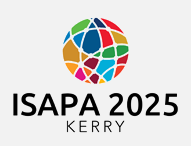Start Date
17-6-2025 3:00 PM
End Date
17-6-2025 4:30 PM
Abstract
This study examines the support environment for parasport in Singapore, focusing on the Wheelchair Rugby Association of Singapore (WRAS). The research aims to identify the key factors influencing participation and development in parasport, as well as to uncover opportunities for improvement. A qualitative research approach, utilizing semi-structured interviews, was employed to gather insights from eight key stakeholders, including athletes, caregivers, and volunteers. Key findings revealed positive perceptions regarding accessibility to facilities and equipment, volunteer cohesion and expertise, and public engagement efforts. However, areas for improvement were identified, including the need for increased public awareness and education, a robust development framework for key stakeholders, and enhanced information sharing channels within the parasport community. By addressing these identified strengths and weaknesses, the parasport community in Singapore can create a more inclusive and supportive environment, empowering persons with disabilities to participate in sports to lead active and fulfilling lives.
Recommended Citation
Seah, Daniel W.H. Mr; Yap, Heng Yeow Dr; and Tan, Jernice S.Y. Dr, "Beyond the Court: The Support System of Singaporean Wheelchair Rugby" (2025). International Symposium of Adapted Physical Activity and International Symposium on Physical Activity and Visual Impairment and Deafblindness. 57.
https://sword.mtu.ie/isapa/2025/day2/57
Beyond the Court: The Support System of Singaporean Wheelchair Rugby
This study examines the support environment for parasport in Singapore, focusing on the Wheelchair Rugby Association of Singapore (WRAS). The research aims to identify the key factors influencing participation and development in parasport, as well as to uncover opportunities for improvement. A qualitative research approach, utilizing semi-structured interviews, was employed to gather insights from eight key stakeholders, including athletes, caregivers, and volunteers. Key findings revealed positive perceptions regarding accessibility to facilities and equipment, volunteer cohesion and expertise, and public engagement efforts. However, areas for improvement were identified, including the need for increased public awareness and education, a robust development framework for key stakeholders, and enhanced information sharing channels within the parasport community. By addressing these identified strengths and weaknesses, the parasport community in Singapore can create a more inclusive and supportive environment, empowering persons with disabilities to participate in sports to lead active and fulfilling lives.

